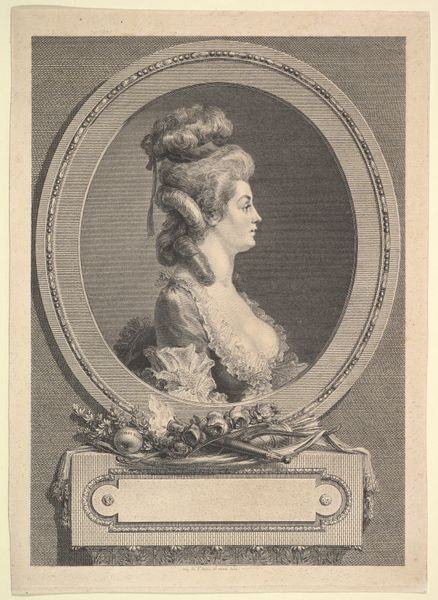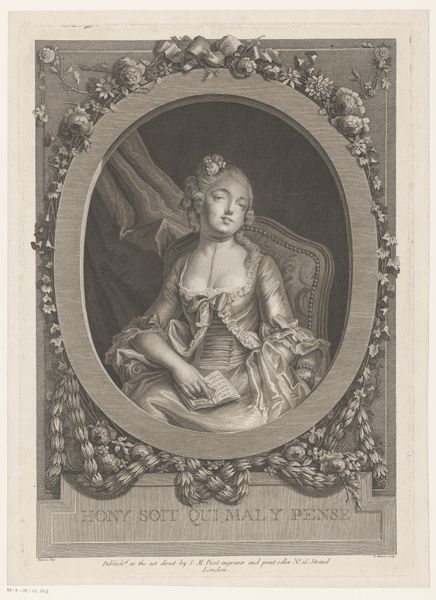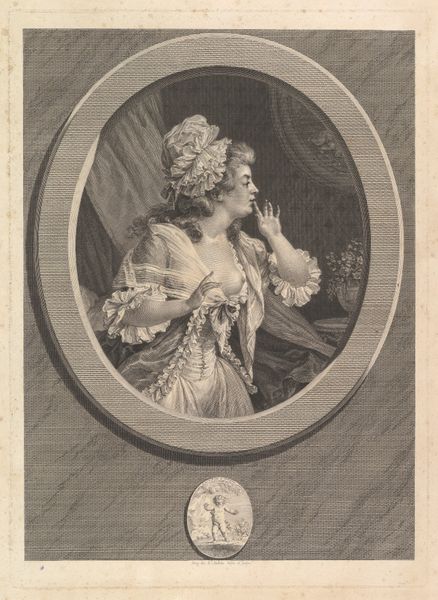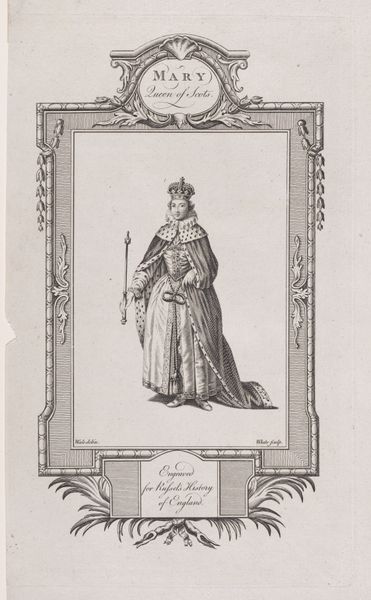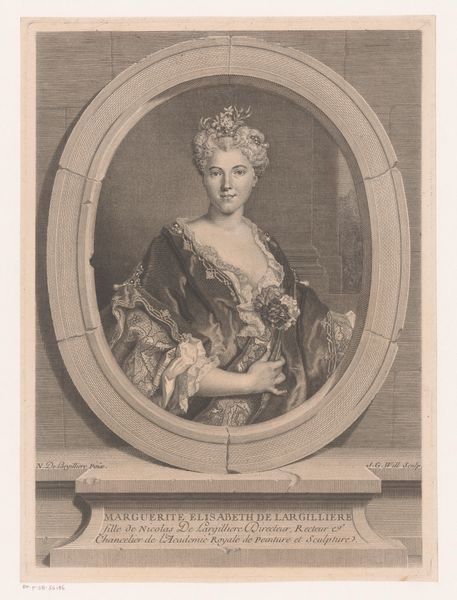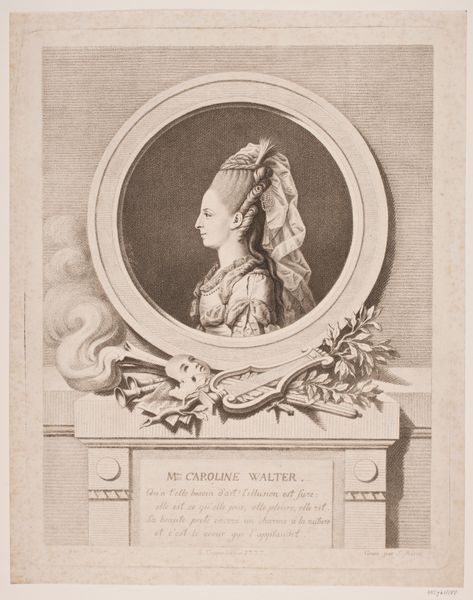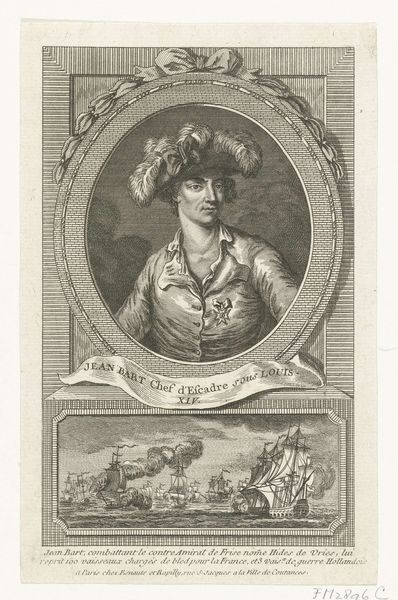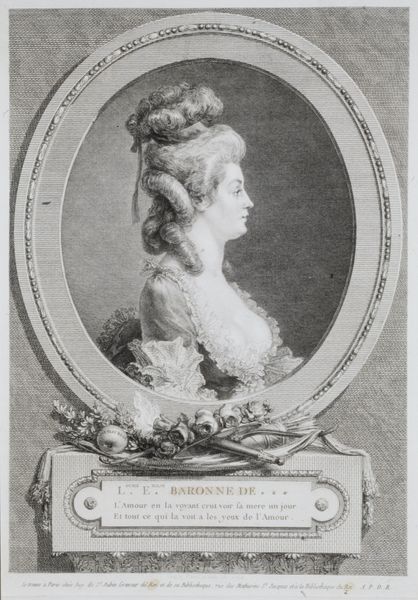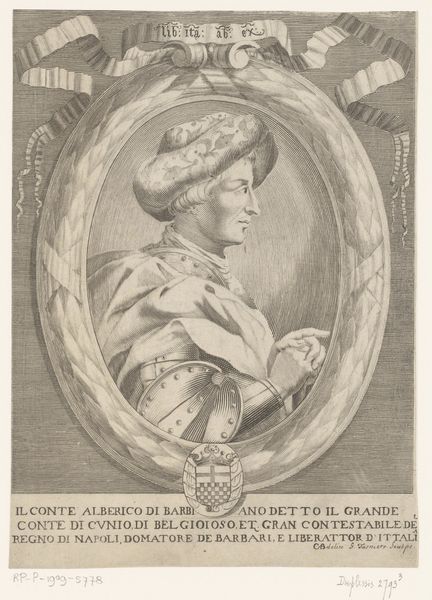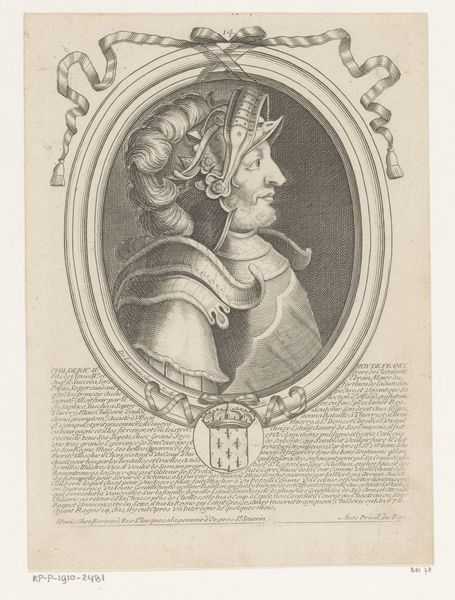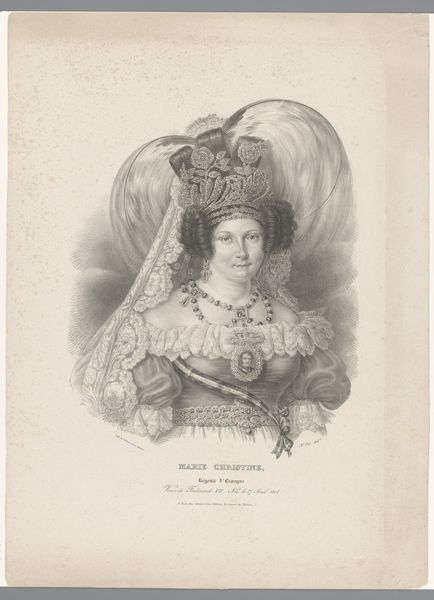
Portrait of Adrienne-Sophie Marquise de *** 1779
0:00
0:00
Dimensions: Sheet: 10 15/16 × 7 7/8 in. (27.8 × 20 cm)
Copyright: Public Domain
Editor: This is a piece titled "Portrait of Adrienne-Sophie Marquise de ***", created in 1779 by Augustin de Saint-Aubin. It’s an engraving, so a type of print. It really captures the elegance of the era, but there’s also something quite formal and constructed about it. How would you interpret its historical significance? Curator: Well, first, notice that the title only gives us part of the sitter's name, signaling that the subject’s identity mattered, but perhaps not as much as her social standing. As a print, this image also had a life beyond the elite circles in which the Marquise moved. Do you see how the symbols below—the musical instruments, for instance—act almost as a performance of her cultural capital? It emphasizes her education, accomplishments, and access to refined society, making visible certain ideals of femininity circulating at that time. Editor: That’s interesting. So it's not just a portrait, but a carefully constructed representation of social status made for a wider audience. Does that mean that prints like these had a political role? Curator: Precisely! While seemingly innocuous, such imagery served to reinforce hierarchical social structures and certain modes of conduct. Images of the aristocracy circulated widely, normalising their position within society, and, in a way, justifying it through the display of elegance and grace that other classes presumably could not attain. Do you think that accessibility changes how the elite want to be seen? Editor: Definitely. Seeing it this way makes me rethink what portraits were actually for back then. I had focused on what was shown, now I'm curious who it was being shown *to*. Thanks, that gives me so much more to think about. Curator: Indeed! Examining art through a historical lens transforms our perception entirely; this one engraving unveils how power operated, and the print participates in that political theater.
Comments
No comments
Be the first to comment and join the conversation on the ultimate creative platform.
